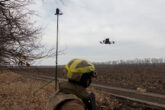August 27, 2017
How to Improve Return on Investment for Security Assistance
Security assistance is an expensive tool of statecraft, even if it is just one component of a total foreign aid allotment that represents only about one percent of the total U.S. budget. In FY 2015, the tab totaled an estimated $16.8 billion. Security assistance includes all grant assistance programs through which the United States provides defense articles, military training, and other defense-related services. The United States uses this assistance not only to build the capacity of allies and partners, but also to try to shape their behavior. Though this latter effort often fails, recipients rarely suffer the consequences.
Read the full op-ed in Lawfare.
More from CNAS
-
Defense / Transatlantic Security
When Defense Becomes Destruction: Austria-Hungary’s Mistake and Ukraine’s RiskThis article was originally posted on War on the Rocks. The southeastern Polish city of Przemyśl, with its elegant 19th century Habsburg-era train station, remains one of the ...
By Franz-Stefan Gady
-
Defense / Transatlantic Security
Ukraine’s Catch-22 MomentThis article was originally published in the Financial Times. In Joseph Heller’s wartime classic, Catch-22, the protagonist Yossarian seeks out the US army surgeon Doc Daneeka...
By Franz-Stefan Gady
-
CNAS Insights | Budgetary Own Goals Undermine “Speed and Volume”
On November 7, Secretary of Defense Pete Hegseth laid out a plan to overhaul the Department of Defense’s (DOD’s) acquisition system. Placing an emphasis on delivering new capa...
By Philip Sheers, Carlton Haelig & Stacie Pettyjohn
-
Drones: Who Is Making the New Weapons of War?
From Ukraine and Russia to Gaza and Sudan, drones have become a key weapon of war. Which companies are making them, and profiting from this rapidly expanding but controversial...
By Stacie Pettyjohn




